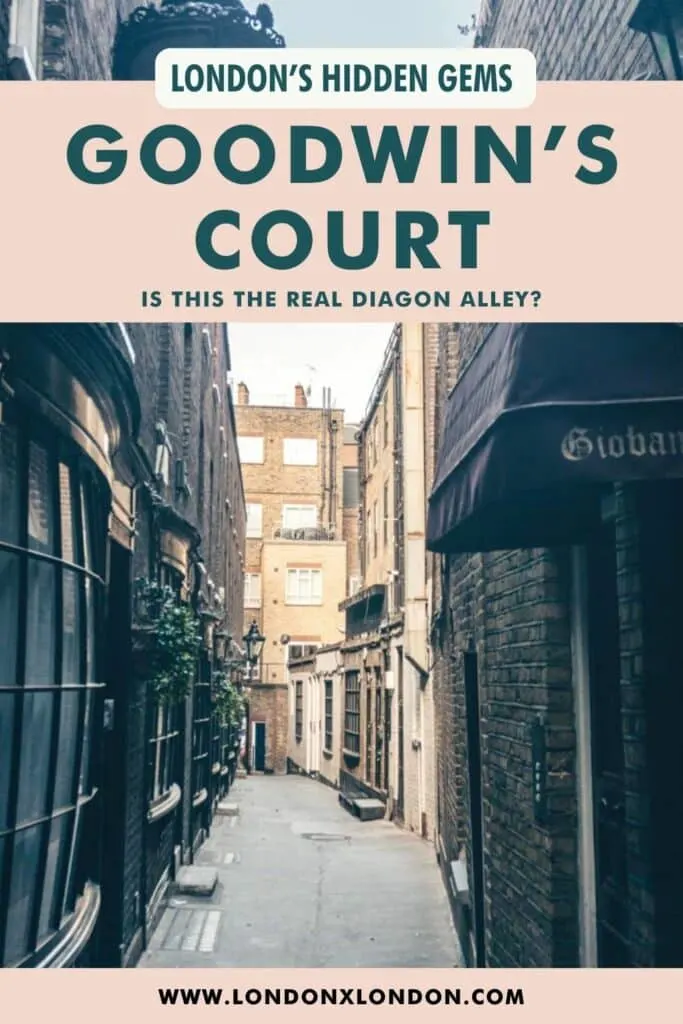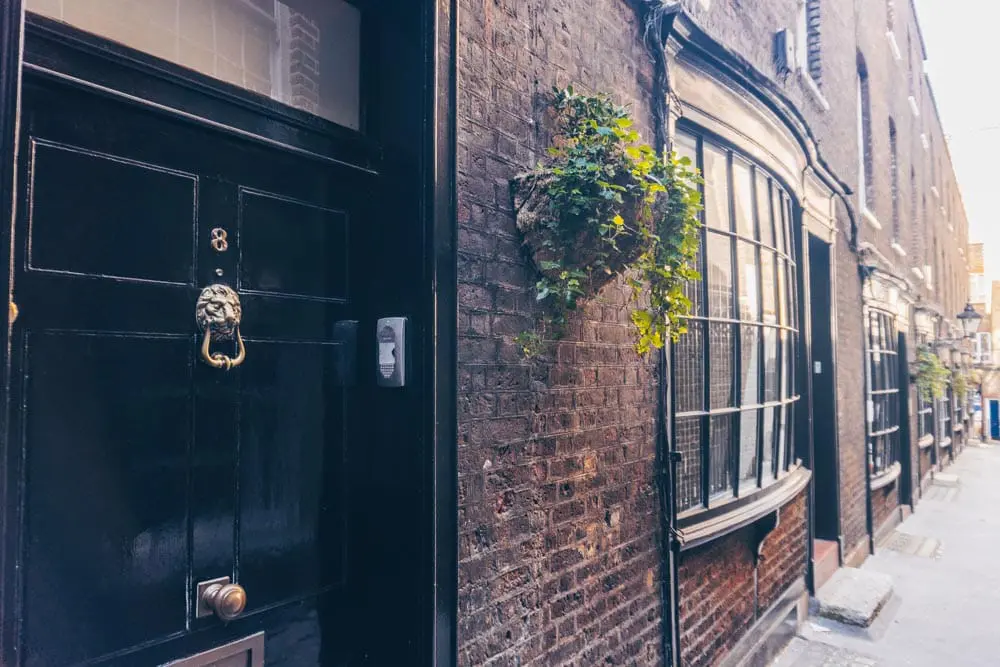Stumbling from the bright lights and constant bustle of Covent Garden into the quiet environs of Goodwin’s Court is like stepping into the pages of a Dickens (or Harry Potter) novel.
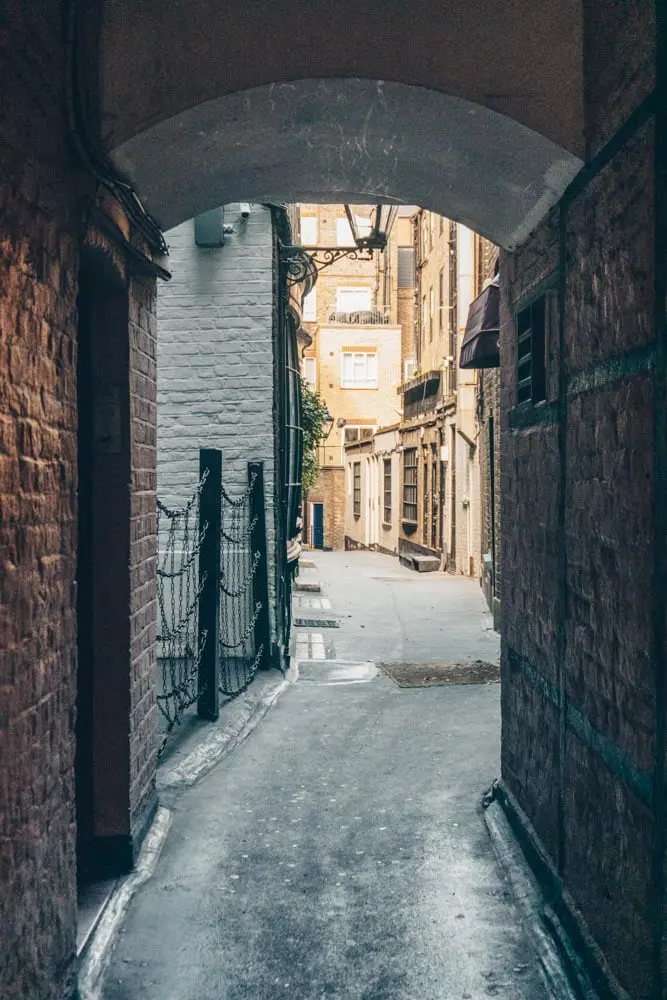
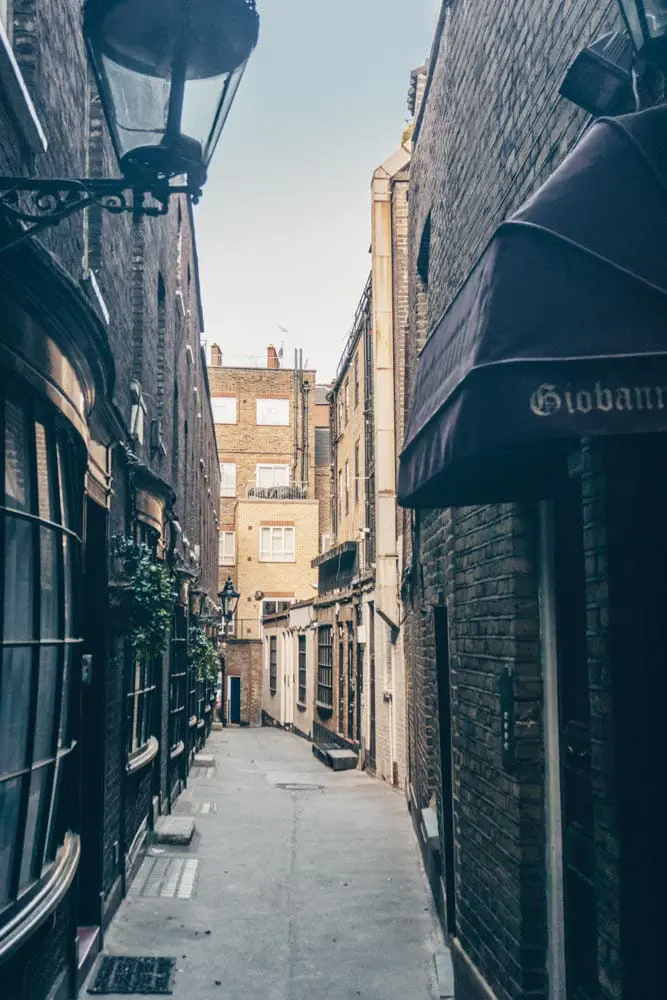
Gone are the crowds and the street performers, replaced instead with a sombre solitude and a terrace of near-perfectly preserved Georgian houses.
This is Goodwin’s Court. A slice of historical London sitting right in the heart of Covent Garden (between St Martin’s Lane and Bedfordbury to be precise).
Touted as one of the contenders for the real-life Diagon Alley from the Harry Potter books (another is the busier Cecil Court around the corner), Goodwin’s Court had been on our list of places to check out for some time.
There’s no point in pretending we’re not a massive Harry Potter fan – we write about it enough that we all know we are… not to mention huge history geeks. So of course we were going to seize the opportunity to see Goodwin’s Court IRL.
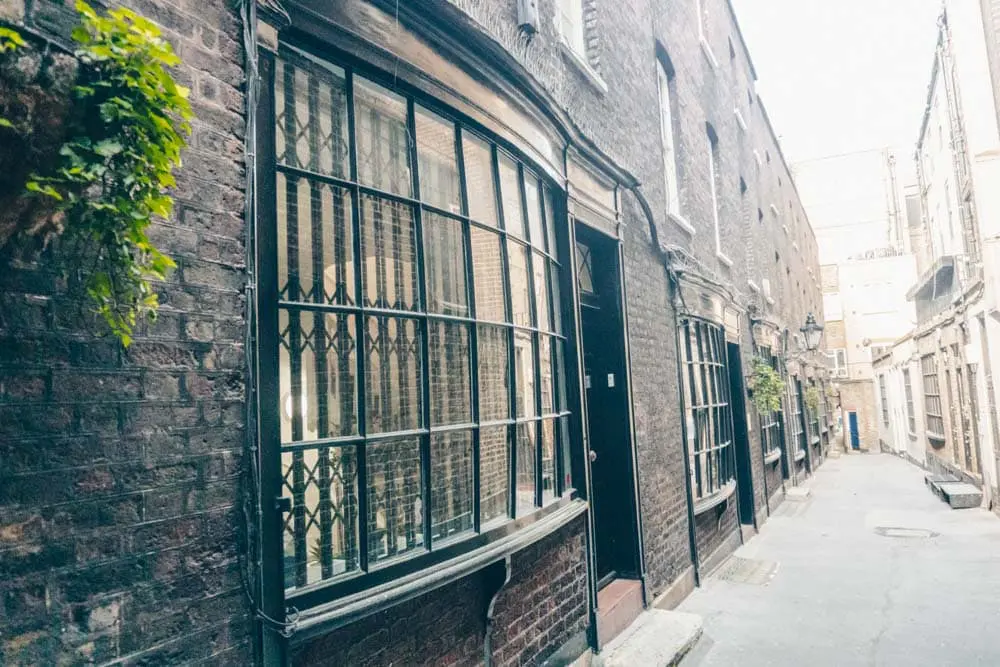
It would be a mistake for you to think that the Harry Potter connection is the sum total of the appeal though: the neat terrace of houses are fronted by bulging wooden bays, the court itself still lit by gaslamp – it’s one of the city’s hidden gems.
Goodwin’s Court first appears in the Survey of London in 1690 and it’s thought that the houses dotted along the court date back to that year (though some contest this saying they’re more likely to have been built in later years).
Read Next: The Ultimate Self-Guided Harry Potter Walking Tour
Is Goodwin’s Court the Real Life Diagon Alley in Harry Potter?
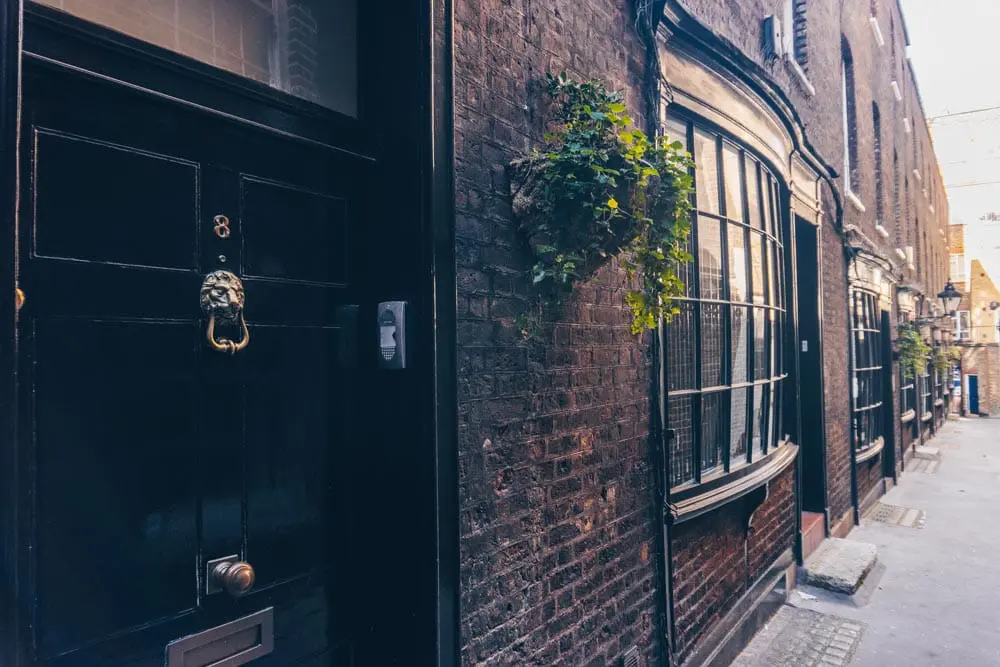
That’s the million dollar question isn’t it?
The sporadic presence of groups sporting capes and wizard’s hats in the alley suggests very much that many fans want it to be.
The biggest clue is that in the books, Harry and Hagrid enter Diagon Alley via the Leaky Cauldron which is on Charing Cross Road and that is nearby… but then again, Cecil Court actually backs up onto Charing Cross Road.
Who knows, though it is rumoured that it was touted as a filming location for the Harry Potter franchise but was rejected as it was too narrow for all the filming equipment to fit.
A Brief History of Goodwin’s Court
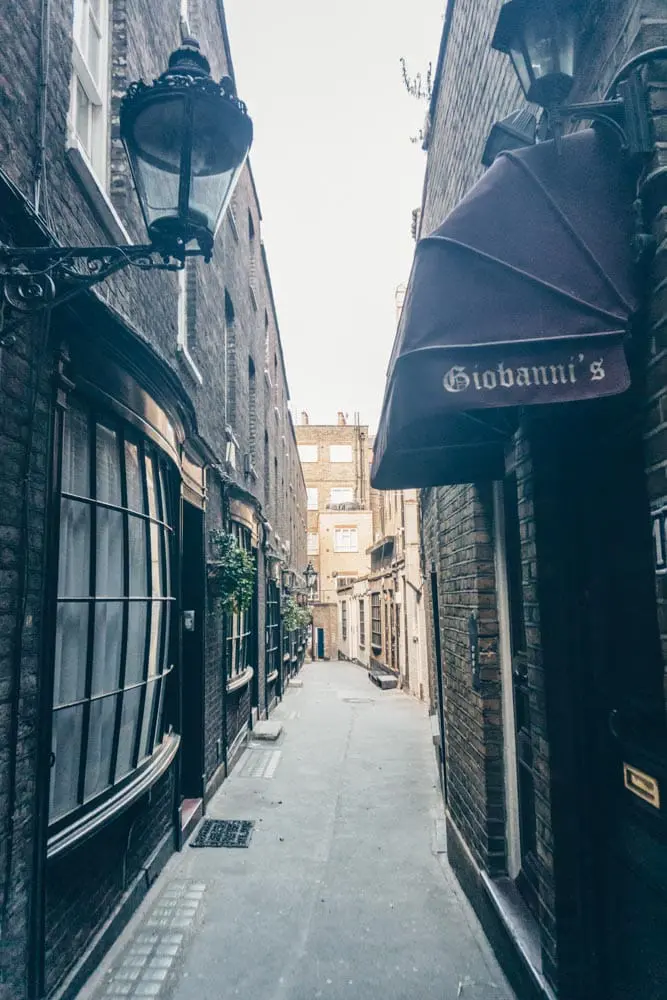
The earliest mention of Goodwin’s Court is in 1690, around the point at which it evolved from Fisher’s Alley that had stood on the same spot previously.
The houses on the south side of the Court are thought to date from this period, although their bulging rounded bays actually date back to the 18th century.
Tough as it is to believe now, Covent Garden was not the salubrious (read jaw-droppingly expensive) place it is today. Life for the early residents was tough and most inhabitants were traders and skilled craftsmen.
Of them, none are notable save for the famous Nell Gwynn – actress and equally famously – the royal mistress to King Charles II. Gwynn was rumoured to have lived in Goodwin’s Court but there’s no definitive proof that this is true.
Much of the Bedfordbury slum was razed to the ground during clearances in 1890 and the area was rebuilt in much grander style. Somehow Goodwin’s survived – explaining the distinct contrast with its surroundings.
Still, Goodwin’s Court wasn’t in great shape and continued to deteriorate in the early 20th century, until the local authorities deemed it unfit for human habitation in the 1930s and moved its residents elsewhere.
Though it had been saved of the slum clearances of prior years, it looked like Goodwin’s Court’s time was up – the houses on one side of the court were demolished with the rest scheduled to follow suit.
Luckily, help came in the form of a Leslie Sympson who bought the court and restored many of the remaining houses. It became a business hub rather than a residential court – the most famous of which was literary agent Peggy Ramsay whose clients listed many literary stars of the 20th century including Alan Ayckborn, David Hare and JB Priestley.
Practical Information + Map
Address
Goodwin’s Court, Covent Garden, WC2N 4LL
Map
Looking for More Covent Garden Guides?
- The Covent Garden Area Guide
- The Best Things to do in Covent Garden
- Take a Look at Cecil Court, Covent Garden’s Other Contender for Diagon Alley
- Where to Eat in Covent Garden
Love This? Save and Share on Pinterest
